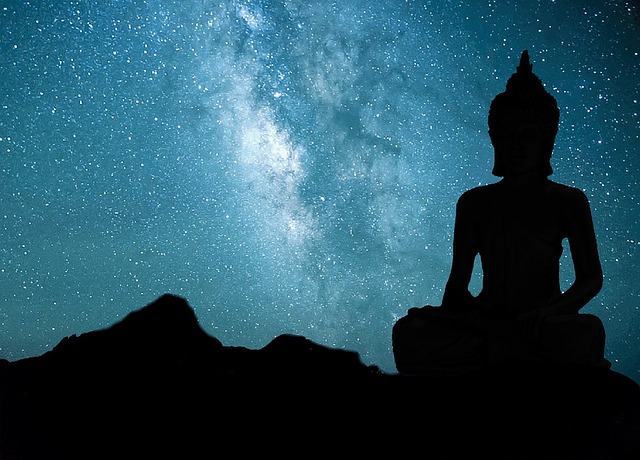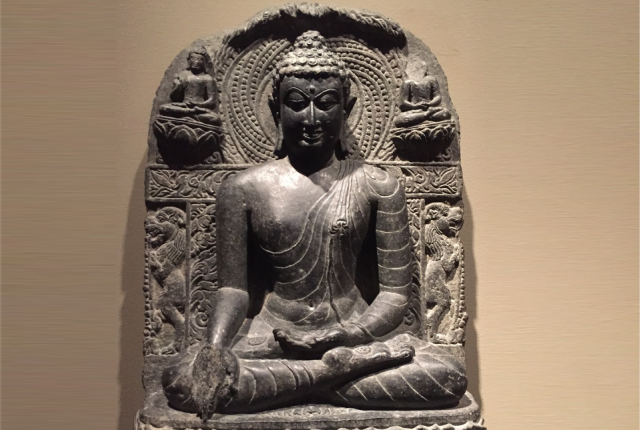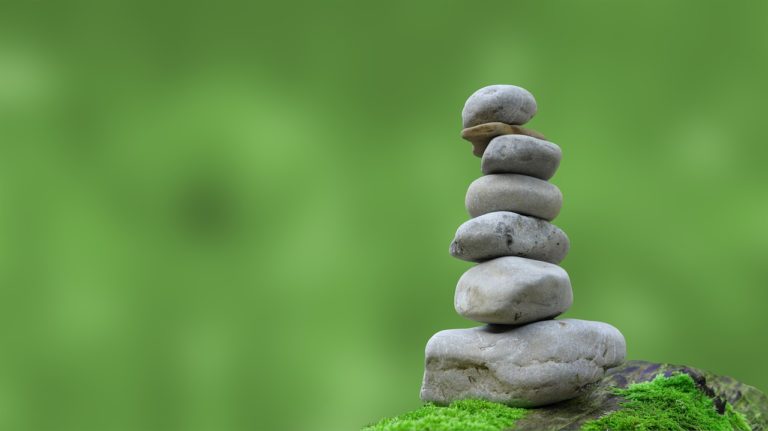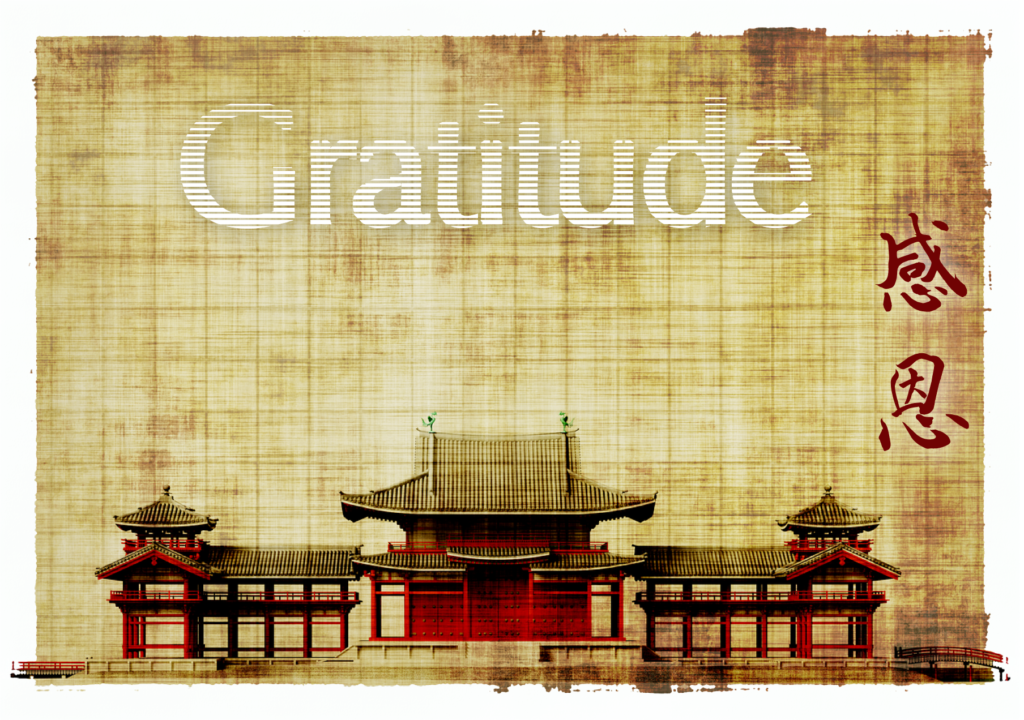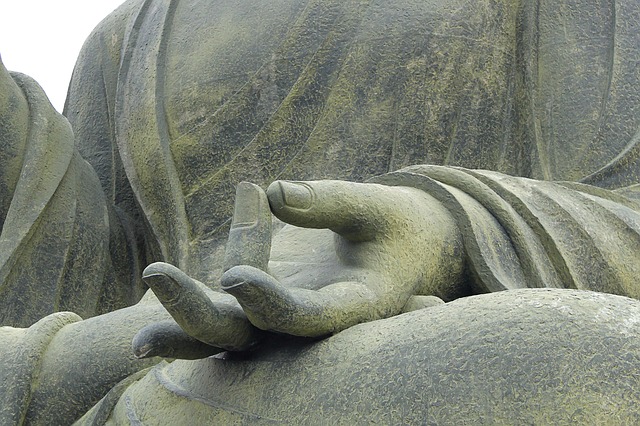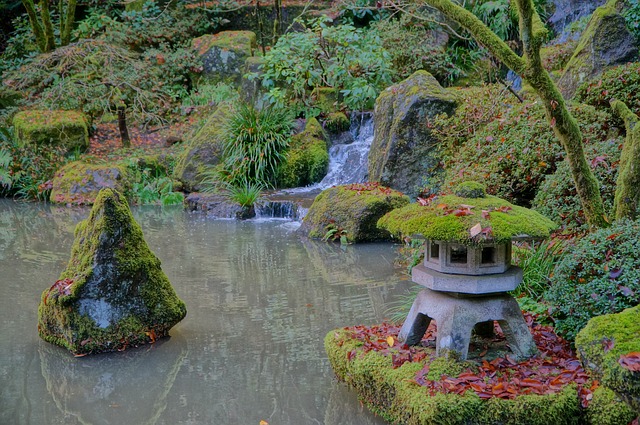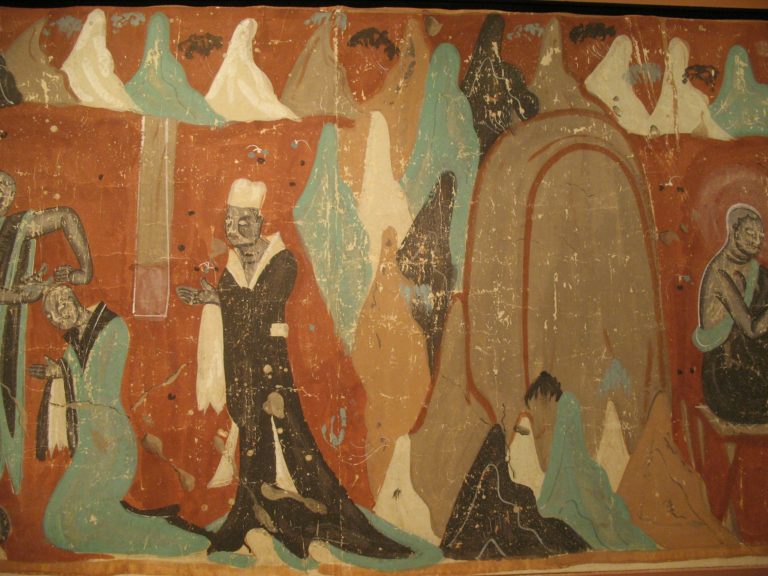Many different sutras contain descriptions of the thirty-two marks and eighty characteristics, each with slight variations.
The eighty notable characteristics are:
- Top of his head not visible to others.
- A prominent nose with well-concealed nostrils.
- Eyebrows shaped like a new moon.
- Large, round ears that are long and thick.
- A strong body.
- Closely-fit bones.
- When he turns, his whole body turns, just like a majestic elephant.
- Leaves imprints as he walks.
- Red fingernails.
- Full, rounded knees.
- A clean body.
- Soft, smooth skin.
- Straight, erect posture.
- Round, slender fingers.
- Fine fingerprints.
- No visible veins.
- Well-concealed heel bones.
- A supple, smooth body.
- A round, full body.
- A straight, steady, focused gait.
- A dignified appearance.
- Peaceful and calm deportment.
- A stable posture when standing.
- A majestic presence.
- A pleasing appearance.
- A perfectly sized face.
- Unperturbed demeanor.
- A beautiful, complete face.
- Red lips.
- A voice that carries.
- A deep, round navel.
- Hair that curls to the right.
- Long arms that reach below the knees.
- Flexible arms and legs.
- Clear, straight palm-lines.
- Fine, long palm-lines.
- Unbroken palm-lines.
- Brings joy to those who see him.
- A perfect, broad face.
- A face full like the moon.
- Peaceful, joyful speech.
- Fragrant pores.
- Fragrant breath.
- Appearance awe-inspiring like that of a lion.
- Gait steady like that of an elephant.
- Steps airy like that of a goose king.
- A well-formed forehead.
- A clearly audible voice.
- White teeth.
- A bright red tongue.
- A long, thin tongue.
- Thick body hair.
- Soft, clean body hair.
- Big, wide eyes.
- A clean, unobstructed airway connecting the seven openings of the face.
- Lotus-colored hands and feet.
- A well-concealed navel.
- An abdomen that does not protrude.
- A well-sized abdomen.
- Steady, stable body.
- A sturdy, stable body.
- A large frame.
- Soft, clean hands and feet.
- A ten-foot halo.
- A glowing halo.
- Treats all sentient beings equally.
- A majestic appearance.
- Does not slight any sentient being.
- An even voice.
- Able to vary his teaching methods.
- Teaches according to the circumstances.
- Though speaking with one voice, sentient beings receive many teachings according to their needs.
- Adapts his teachings according to the spiritual maturity of the listener.
- Can be seen with endlessly different appearances.
- An appearance one wishes to see again.
- Long, healthy hair.
- Long, neat hair.
- Neatly curled hair.
- Dark-colored hair.
- A virtuous appearance.
This list is from Seeing the Buddha, by Venerable Master Hsing Yun.
What are people supposed to do when they are troubled by afflictions? Some people are troubled by very specific things, others encounter poverty, and many have poor relations with other people. Some individuals are disturbed the moment they hear even the slightest comment they do not like, or they become angry when they see someone doing something they do not approve of. This sort of Read more
Life is the most precious thing in the world, so it is imperative that we respect it in all its forms. Not only must we have regard for human life, we must also respect animal life and the life of any organism in our ecosystem. The worst offense a person can ever commit is to violate the life of others, or even to cause harm Read more
Harmful attachments are often described in Buddhist literature as impediments or hindrances because they block our view of the truth and prevent us from seeing our own Buddha nature. Read more
Though sitting meditation was given to us from the ancient past it is a way for modern people to lead happy lives. Sitting meditation allows us to dispel the pressures of daily life that come from the mind’s confusion and a mistaken understanding of phenomena. Practicing sitting meditation quiets the mind and stills our thoughts so that we can recover our intrinsic nature. Sitting meditation Read more
Social harmony stems from handling relationships and communal living with skill, effort, and a spirit of cooperation. We can learn a lot about keeping peace in social living from the six points of reverent harmony that the monastic sangha observes. Sangha is a Sanskrit word, which can be interpreted on many different levels. In its widest interpretation, it refers to all those who have the Read more
Love and affection are infinitely valuable. There are various levels of love and affection that we can aspire to. Some people describe how people love this way: Young people love with their words, middle-aged people love with their actions, and elder people love with their hearts. Read more
When someone benefits us even a little,we should repay them with all our hearts.Even if someone is angry with us,we should always treat them well.— Upasakasila Sutra Gratitude Is Fundamental to BuddhismA natural outgrowth of heartfelt gratitude is the desire to repay others for the kind things they have done for us. Having the feeling of being indebted to others is a sign that we are Read more
Some people may think it is strange that in this scientifically enlightened century anyone would want to talk about ghosts. In the past, even sages avoided the subject of the supernatural if they could. Confucius never spoke about ghosts. At the mere mention of ghosts, frightful images instantly arise in our minds of their pale faces, their wild hair and their sharp fangs. The truth Read more
The first realization of The Eight Realizations of a Bodhisatttva Sutra is concerned with what is generally called the Buddha’s view of this world. This first realization is a description of the basic features of the world we live in. The points made in this realization are made in many other Buddhist sutras.The Buddha emphasized these basic points on many different occasions because it is Read more
One of the great advantages of sitting meditation is that you can take it with you wherever you go. Whether you are in a forest deep in the mountains or beside a stream among the grass and reeds, you can develop meditative concentration just by sitting down and crossing your legs.But what is meditation? Does it come from sitting, standing, or lying down? Huineng, the Read more
In this modern world, people are constantly saying, “Life is too stressful!” Why are people so stressed out? How can we rid ourselves of stress? Students feel stressed because of heavy schoolwork; parents feel stressed because they have too many chores and family obligations; policemen feel stressed because they have too much work; and workers feel stressed and are unhappy because their work hours are Read more
Being patient is an art, and being persistent is a kind of hope. Influenced by today’s instant culture, modern people tend to expect instant results in anything they do. Practitioners want to have attainment in this life, scholars want to become instant laureates in their fields, and entrepreneurs want to gain a huge fortune overnight. As the saying goes, “A flower picked before its time Read more



